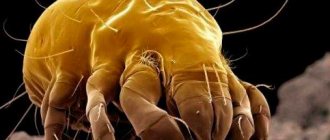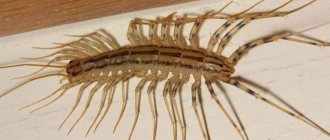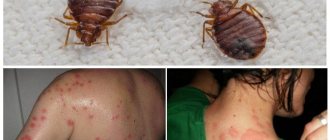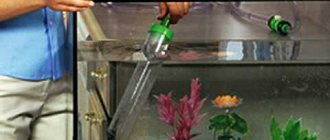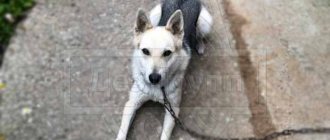Your sleep will not be healthy and relieve fatigue if you have pillow mites. It is impossible to see them on your bed with an ordinary glance. Dust, down or lint eaters - it is more correct to call them, are found in almost every bed. As a rule, mites live in places where dust accumulates, including pillows, mattresses, and carpets. Most people don't even realize that every night they lay their head on a pillow that is "infested" with mites.
Doctors assure that every sixth child with bronchial asthma suffers from an allergy to feather mites . Sleeping on pillows infected with feather mites is not at all safe, because the mite can crawl into a person’s ear, the parasites themselves can feed on the scales of the epidermis (dead skin), and their excrement corrodes and poisons human skin. As a result, a person actively develops various allergic reactions or a disease, which is popularly called scab.
Description of the parasite, causes of appearance
Ticks belong to the family of small arachnids.
They are divided into two orders: acariformes and parasitiforms. Acariform mites are closer to phalangeal arachnids, while parasitiform mites belong to the class of harvesters. The feather mite (photo presented in the article) belongs to the order Acariformes. The parasite is almost impossible to detect; it has a transparent scaly body, and its dimensions do not exceed 0.5 mm in length. Due to the peculiarities of its structure, it cannot bite a person, however, the protein that it secretes in the process of life can cause an acute allergic reaction.
The main reasons for the appearance of the insect are unsanitary conditions and careless attitude towards personal and bedding. Ticks spread very quickly. It is impossible to completely get rid of them, but you can significantly reduce their numbers.
Habitat
The pests live and breed on birds' feathers, causing them to fall out over time. In residential buildings, feather mites are most often found in pillows (photo below), upholstered furniture, carpeting and places where dust accumulates. However, down and feather pillows are considered the most favorable habitat for the parasite.
Feather base and human sweat combine to create the optimal temperature and humidity necessary for insect reproduction. Most people ventilate the room before going to bed, thereby improving the living conditions of the insect, since fresh air is one of the main components of its life support.
If not properly cared for, any down or feather product will gain weight after a few years due to the accumulation of dust and mites. On average, there are up to 200 individuals for every centimeter of feather pillow. As a rule, parasites get onto human skin from down or feather products, causing clearly noticeable discomfort.
Since it is extremely difficult to completely get rid of feather mites, down and feather filling of bedding is prohibited in most developed countries. This mainly concerns municipal children's institutions, hospitals, sanatoriums, hotels, barracks and student dormitories.
Modern manufacturers give preference to synthetic fillers such as padding polyester and holofiber. It is much easier to care for such products; in addition, the existence of parasites in them is almost impossible. For people who prefer natural materials, bedding with bamboo or coconut fiber, buckwheat, pine needles and even purified meadow hay is recommended. It is advisable to update pillows once a year.
Danger to humans
If treatment is not started in time, feather mites can cause acute allergic reactions or aggravate existing diseases:
- Asthma. The patient experiences attacks of the disease more often.
- Allergies are possible with a severe cough, watery eyes and runny nose. If you eliminate the allergen, you feel better and the symptoms disappear.
- Hives are accompanied by itching, and characteristic pink spots appear on the body.
- Atopic dermatitis - manifested by redness and peeling of some areas of the skin, severe itching is possible. The disease requires long-term treatment.
- Swelling of the airways is the most dangerous possible reaction, as it can be fatal.
What should not be done if an infection is detected?
A person who has discovered a feather mite infestation should absolutely not:
- squeeze pimples with your own hands, this way you can introduce infection into the deep layers of the skin and blood;
- use decorative cosmetics - mite larvae may remain on it, which in the future will lead to re-infection;
- use creams, since the parasite’s habitat improves and the infection spreads throughout the face;
- carry out cosmetic procedures such as scrub, massage, cleansing and masks;
- visit the swimming pool, sauna, solarium;
- wash with hot water.
In addition, it is highly recommended to review your daily diet. Avoid processed foods, canned, smoked, spicy and fried foods. Add less salt and spices to food. Avoid alcohol during treatment. You can eat chocolate and drink coffee in reasonable quantities.
What are feather mites?
Feather mites can feel comfortable not only in blankets and pillows, but also in other products consisting of down or feathers. The tick lives for about 80 days, and leaves behind a clutch of eggs, the number of which reaches 60-70 pieces. They live in entire colonies. One gram of dust can contain from 10 to 10,000 individuals. The norm is the presence of up to 100 parasites in 1 g of dust, since this concentration of insects is quite safe for humans.
Dust (feather) mites are synanthropic organisms. They always live next to a person. Ideal conditions have been created here: fairly warm, moderate humidity, plenty of food. Mites often feed on woolen lint in bedding. However, the main source of food is dead human skin cells, of which there are about one and a half grams daily.
ethnoscience
Many people prefer to turn to alternative medicine methods to treat feather mite bites.
- One of the most effective recipes for parasitic effects is calendula infusion. The product is applied to a cotton pad and treated for skin inflammation.
- You can use aloe juice as a compress: apply to a bandage and apply to the skin.
- In case of severe damage to the skin, mix castor oil with trichopolum and apply a bandage for 8-10 hours daily.
What does a feather mite look like? Photo under a microscope
Few people know that feather mites are individuals belonging to the group of pests Dermatophagoides (dust parasites). They are characterized by a body length of 0.1 to 0.5 mm. This allows them to remain undetected for a long time. Moreover, in a dream, when a person’s head is on the pillow, there are no external sensations. Even the appearance of a large number of pests does not cause discomfort during rest.
If you are wondering what ticks look like in pillows, you need to consider that they move using 4 pairs of limbs. Moreover, there are suction cups and claw-like protrusions on the legs. This allows pests to stay on the fluff of the fluff. The body of parasites is oval, convex.
These mites have powerful mouthparts
(consisting of claw-shaped chelicerae), thanks to this, pests chew through particles of dead epidermis.
Feather mite under a microscope. Feather mites have powerful mouthparts Photo of a feather mite under a microscope
Harm from mites in bedding
Without examining bedding using a microscope, it will not be possible to identify unwanted neighbors - their sizes are so small that they are not visible to the naked eye.
Colonies of microscopic insects, fungi and bacteria inhabit any dusty corners of the apartment, actively growing on bed linen, in the thickness of pillows and mattresses, in the pile of the carpet and soft toys.
It is almost impossible to get rid of them once and for all, but this is not a reason to completely ignore the problem. Acarids cannot cause direct harm to humans, because they do not feed on blood through bites, but on exfoliated skin flakes, particles of sweat, dandruff, and sebum. But their excrement poses a serious threat.
The size of an adult varies from 0.1 to 0.5 mm, and its waste products are even smaller. During the digestion process, ticks have to produce large amounts of enzymes that break down the human epidermis.
Practice shows that people who love space, who toss and turn in their sleep and who have respectable dimensions are satisfied with the size of a single bed.
Almost every car bed model has a trunk box, which is suitable for storing bed linen and pillows. There are voluminous crib bodies that replicate the silhouettes of real cars, with spinning wheels made of soft plastic. Details here.
Fecal pellets left by insects contain these components in high concentrations. They are the main threat to the human body.
Getting on the mucous membranes when breathing, settling on the skin, attacking the eyes and polluting the lungs, the active substances cause serious disturbances in the respiratory system, irritate the skin, and can cause impairment of vision and smell.
The most common diseases and symptoms, the invisible cause of which are mites in pillows:
- allergies accompanied by rhinitis, conjunctivitis and asthma attacks;
- atopic dermatitis;
- swelling of the respiratory tract, trophoneurotic edema or urticaria (Quincke's edema);
- up to 70% of diagnosed cases of bronchial asthma.
With a reduced immune barrier, they can cause skin irritations, acne and deep infections - other mites (for example, demodex) that parasitize directly in the human body can penetrate into microdamages in the skin formed under the action of enzymes.
The danger of a linen mite bite
Dust mites in pillows find themselves in greenhouse, extremely favorable conditions. Thanks to human sweat and the hygroscopicity of the materials used for bedding, an optimal humidity level is maintained inside.
The constant warm atmosphere of the bedroom is just as pleasant for microinsects as it is for people. And periodic drafts and ventilation only add comfort - they really love the flow of fresh air.
The colony multiplies very quickly, and there is more and more waste. Any mattress or feather product without proper care can double its weight in 5 years - that’s how much dirt, microorganisms and fungi accumulate there.
So it turns out that instead of proper rest, a person each time receives an increased dose of toxic allergens, inhaling them throughout the night. Moreover, symptoms and discomfort may appear 10–20 minutes after the start of contact with the bed.
And by the morning the result is manifested in all its glory - redness of the eyes, swelling of the face and mucous membranes, difficulty breathing, headache and scratching on the skin.
Hygiene standards in many countries do not allow the use of feather and down bedding. Such rules apply especially harshly to children's institutions, hospitals, hotels, hostels and other similar institutions.
The reason for the ban is the impossibility of complete and irreversible destruction of parasitic colonies of bed mites inside the product.
When purchasing bedding, it is better to give preference to fillers such as silicone, holofiber, padding polyester, and other synthetic materials. They are less susceptible to colonization by microorganisms, and caring for them is not so labor-intensive. From natural materials, you can choose bamboo or coconut fibers, buckwheat husks, and hop cones. As a summer cottage option, meadow hay is quite suitable - it is only important to ensure that no poisonous herbs or plants that cause allergic reactions are included in the collection (see Which filling is best for pillows).
It is advisable to change any pillows after six months (maximum a year) of regular use, especially for those stuffed with natural materials. This measure will most effectively protect against problems caused by proximity to ticks.
If this is not possible, then you can at least try to reduce the number of parasite colonies and get rid of their waste products.
Treatment of demodicosis
First of all, the patient needs to go on a strict diet, not eat canned and pickled foods, smoked meat and sausage, fried foods, smoked and dried fish, dishes with a large number of herbs and spices, completely eliminate alcohol, eat chocolate in moderation, drink strong tea and coffee less often, limit yourself to sweets.
It is strictly forbidden to go to the solarium and stay in the open sun for a long time in the summer.
The use of foundation and powder is prohibited; it is advisable to completely eliminate all cosmetics during treatment, and throw away old products, as they also contain mites. Makeup brushes should be thoroughly disinfected to avoid becoming infected with demodicosis again. Do not use day or night cream or nourishing masks. Instead, it is better to use cleansing foams, tonics, and gel serums.
Volvit
The patient should wash with water at room temperature, not hot.
Squeezing pimples is strictly prohibited, as this promotes the spread of infection to other areas of the face.
The patient is prescribed vitamins (“Volvit” or “Vitrum”), which include group B, C and other minerals.
Prevention of demodicosis consists of following the following rules: you need to pay special attention to personal hygiene, change the pillowcase every day or iron it with an iron, do not wipe yourself with a cloth towel after washing, it is better to use disposable dry towels. Use Spregal to spray pillows to kill parasites. It is strictly forbidden to visit the sauna and swimming pool
It is strictly forbidden to visit the sauna and swimming pool.
Sedafiton
Try to expose yourself to stress as little as possible; at first it is recommended to take sedatives, for example, Sedafiton.
Try not to overwork your body and spend no more time in fresh air. If demodicosis of the eyes is detected, then you should reduce the load on them, smear the eyelashes with a specialized gel for demodex of the eyelids. If there are animals in the house, it is necessary to clean the fur.
The most well-known drugs for the treatment of feather mites are benzyl benzoate, ichthyol ointment, tar soap and metronidazole. No less effective are sulfur-based ointments, for example, Wilkinson's sulfur-salicylic ointment. It kills germs, relieves inflammation, and has an antiseptic effect. The course of treatment with ointment lasts from five days. One of the negative aspects is the unpleasant pungent odor.
Vidal's milk is an excellent way to cope with demodicosis, as it effectively kills parasites, reduces sebum production and fights stagnant acne spots.
It is recommended to take Trichopolum or Tetracycline internally. The course will last up to 10-14 days.
Trichopolum
How to deal with ticks in bed
Everyone knows that hygiene is the key to health. This rule turns out to be effective in any situation, and the problem with bed parasites is also partially solved by observing sanitary standards.
Frequent washing and obligatory ironing of pillowcases with a hot iron will help get rid of unwanted “tenants” on the surface. But deep cleaning will require more significant effort.
In hospitals or hotels, bedding should be processed in autoclaves - exposure to high temperature and pressure effectively destroys not only adult ticks, but also tick eggs.
Unfortunately, this approach greatly spoils the appearance of the products and requires special equipment, so it is not applicable at home. And public institutions often neglect the rules, so on a business trip or on vacation it is safer to purchase a small personal pillow than to use the one provided by the hotel.
As a last resort, you can sleep on an inflatable pillow - its surface is easy to clean and disinfect, so insects have no chance.
Feather mites in pillows can be destroyed by taking them outside at least once a month - the sun or frost will do the job perfectly. It is important to take into account that such temperature treatment cannot be short; 1 hour will not play a significant role.
A product with down or feather filling should be frozen for 24 hours, periodically shaking and fluffing (see Cleaning feather pillows). The sun's rays and a temperature of 40 degrees act slower than frost; you will have to fry for 2-3 days. The advantage of such procedures is that in 2–3 hours, under the influence of ultraviolet light, allergens are decomposed and neutralized.
A significant disadvantage is that sunbathing and street ventilation will only bring a temporary effect, since the adult individuals will die, but the eggs, which are very resistant to changes in external factors, will survive.
To reduce the contamination of the bedroom, it is necessary to carry out regular wet cleaning, dust in all accessible places, wash the floors and wipe the furniture with a strong saline solution (200 g of salt per bucket of water).
Any bedding, mattress covers, as well as fleecy bedspreads, blankets, pajamas, housecoats should be washed and shaken out as often as possible, and it is best to dry them in the sun - this will remove most of the acarids and their metabolic products.
Standard euro size of a single bed: length 200-210 cm, width 90-100 cm. All necessary accessories in European countries are produced in accordance with these measurements.
Removable bumpers for children's beds are very convenient because they can be removed at any time, and then the bed will return to its original appearance. Read a description of the types and designs of protective sides here.
For greater washing efficiency, you can use various acaricidal substances and additives. Easy to use sprays for upholstered furniture and fabric surfaces, additives to washing powder that neutralize mites and allergens produced by them.
As a rule, products with synthetic padding are easy to wash and dry quickly, so they are safer than feather and down ones.
How to get rid of ticks in pillows
It is impossible to completely exterminate all ticks, but you can try to reduce their population. The oldest and most proven method is called temperature exposure.
Pillows and blankets can be taken out into the cold in winter or warmed up in direct sunlight in summer. The period of such exposure should be long, preferably several days in a row.
Effective drugs
Mites on bedding can be easily eliminated by washing and carefully ironing. You can treat furniture and pillows with a steam cleaner, but the downside is that steam only kills adults and does not affect eggs and larvae.
Today there are many special acaricidal drugs that can cope with large numbers of ticks.
Akaril is available in liquid or powder form for cleaning carpets and washing bed linen. It can also be used to treat upholstered furniture and mattresses, but first dissolve it in water. According to users, the product is not bad, but it cannot clean the filling of pillows and feather beds. The advantage is that the product has a completely natural composition.
The cost of a 240 ml bottle is 2,700 rubles, and it is enough for 12 washes.
Allergorr is an excellent Polish spray to combat dust and feather mites. It is enough to spray it over the entire surface of the apartment, on pillows and bedding. The duration of the drug is up to 7 months.
According to reviews, Allergorr is considered one of the most effective products, without an unpleasant odor, and does not cause allergies when used. The price of a bottle (400 ml) is 1300-1700 rubles.
Another spray from the same series is the Swiss drug Milbiol. Users have only positive reviews of it, because it is enough to spray it on carpets, furniture, pillows and blankets. The product has a pleasant smell and does not cause allergic reactions. For a bottle of spray (250 ml) you need to pay only 130-150 rubles.
Folk recipes
In addition to chemical sprays, folk remedies are also used to combat ticks. They are safer, non-toxic, and do not harm pets or people. Although, acaricidal drugs are much more effective than traditional recipes.
You can prepare a lotion from water and tea tree oil, with the addition of a couple of drops of Eleutherococcus tincture. Before going to bed, apply the lotion to the skin of the face and neck, wipe the body.
This will repel parasites and make the bed safe.
Some housewives advise treating furniture and pillows with regular saline solution. The most modern way to get rid of feather mites is a vacuum cleaner with a HEPA filter.
It not only collects all the smallest particles of dust, but also destroys microscopic mites.
Chemical method
Traditional methods are effective only if a small number of insects live in the home. To destroy large quantities of them, it is necessary to use insecticidal agents, the composition of which includes toxic substances.
During the treatment, people and pets are advised to leave the premises. After disinsection treatment, you need to ventilate the apartment and do wet cleaning. It is advisable to repeat the procedure after two weeks; this measure will help prevent the reappearance of bloodsuckers inside the home.
Delta zone
Delta zone is a highly effective insecticidal preparation, presented in the form of microcapsules. The product has a detrimental effect on synanthropic parasites.
The drug is a highly concentrated solution that must first be diluted with water for pest control treatment.
When preparing the solution, it is important to follow the recommendations specified in the instructions. Deviation from these rules may lead to a lack of positive results.
Get total
Get Total insecticide is a highly effective new generation drug. A distinctive feature of the product is the absence of negative effects of toxic substances on people and pets.
You can use Get to treat an apartment without temporarily evicting household members. To carry out the procedure, the concentrate must first be diluted with water. When applied to exposed surfaces, Get retains its insecticidal properties for several weeks, eliminating the need for re-treatment.
Xulate micro
Xulat micro is an effective insecticidal preparation intended for the destruction of synanthropic insects in residential premises. The composition of the drug includes three main active components, which eliminates the development of addiction in parasites.
Cucaracha
Cucaracha is an insecticide developed to combat bedbugs and other types of synanthropic insects. It has a high level of toxicity and is intended for treatment of residential premises.
Due to the presence of a strong unpleasant odor in the product, residents should leave the apartment during the procedure until the toxic substance has completely evaporated.
Cifox
Despite the high level of effectiveness, the drug Tsifoks is extremely rarely used to treat residential premises infested with insects. This is due to the high level of toxicity.
To remove blood-sucking insects, you need to prepare an aqueous solution of an insecticidal agent, and then treat all surfaces with it. After completing the procedure, you need to wait some time, then thoroughly ventilate the room and carry out wet cleaning.
Which pillows do ticks not live in?
Fortunately, nowadays there are many other fillings for blankets, mattresses and pillows that are completely unsuitable for dust mites. The website "Who's Over 30" will tell you about the best of them.
Bio-pillows filled with buckwheat husks
This type of filler is very hygienic; it does not become clogged with dust or parasites.
Such bedding is absolutely not inhabited by insects; dust mites do not live in pillows filled with buckwheat husks, since there is no food for them.
In addition, such bedding is hypoallergenic and has an orthopedic effect.
Hypoallergenic pillows
These are accessories for sleeping and relaxation that are made from 100% natural materials - allergen-repellent wool and 100% cotton.
Such pillows are absolutely airtight, due to which neither dust nor parasites can get into their middle. The service life of such products is up to 10 years!
Caring for them is quite simple - you just need to change the pillowcases every two weeks, wash in lukewarm water, without using aggressive detergents, bleaches or conditioners.
Bamboo pillows
The fiber of this plant has unique natural properties, namely, bactericidal, antistatic, and deodorizing.
Dust mites do not live in such pillows. Bamboo fibers contain a natural antiseptic that prevents bacteria and parasites from multiplying.
About 70% of bacteria that land on a pillow die. It should be noted that over time, the antibacterial properties of bamboo pillows do not weaken, remaining even after numerous washes.
Synthetic materials
In the mass human consciousness there is a strong association: synthetics = harm. However, as was shown above when describing natural materials, none of them are ideal for making pillows! If you choose high-quality down, bamboo or other pillows, take good care of them and change them on time, they can be simply magnificent. But we can absolutely say that synthetic materials are not inferior to natural ones at all, and in some ways they are even superior to them.
For example they:
- Easy to care for
- Hypoallergenic
- Some of them have orthopedic properties
- In synthetic fillers, the development of harmful organisms does not occur as quickly as in natural fillers.
However, again, these advantages are characteristic of high-quality materials. If the pillow is made by a little-known manufacturer or its origin is generally in doubt, it is better not to buy it. Bad, low-quality synthetic materials can even be toxic! So, as they say, look at the label.
Polyester
White very thin fibers. The material is soft, retains heat well, does not absorb odors, is hypoallergenic, very light, and washable. Accordingly, a polyester pillow has the same properties. Another plus is that polyester fibers have a “natural” ability to not accumulate electrostatic electricity.
The disadvantages of polyester pillows are that over time, threads of the material may begin to peek out from the seam area of the pillow. In addition, they have “problems” with heat transfer; in summer it can be hot on such pillows, and the material does not absorb water very well, so the cover gets wet and remains wet, which makes sleeping unpleasant. Finally, after some time of use, the pillow becomes flatter and less elastic.
Holofiber
Holofiber pillow filling is polyester twisted into balls and treated with silicone. In this form, the material has greater elasticity and cakes less over time. The pillow can be periodically “shake up”, and it will return its properties. Such products “shrink” more slowly than polyester ones. Other advantages and disadvantages are the same as those of polyester. Nowadays, holofiber pillow filling is very popular.
Sintepon
An option for those who find even inexpensive holofiber a little expensive. Synthetic padding for pillows is a very light and airy material made from thin threads. The hairs are glued together; as a rule, they are glued together by heating the material. Advantages: elasticity, softness, uniformity.
Be careful - padding polyester pillows are sometimes of poor quality! Unscrupulous manufacturers can use padding polyester “glued together” using adhesive mixtures rather than temperature. This “technical” option is used for making furniture, but it is in no way suitable for sewing pillows.
There are a number of other materials (mainly synthetic) that are used in the manufacture of so-called orthopedic pillows. The description of their properties is worthy of more than a couple of words, so read about them in a separate article.
How to clean your bed from harmful microorganisms
It is not possible to get rid of ticks completely and forever; the main rule is to keep the house clean and carefully care for bedding.
What will help get rid of dust microorganisms in pillows:
- Ideally, replace down and feather products with accessories with synthetic filling: padding polyester, holofiber, comforter, which must be washed once every six months at temperatures above 50 °C.
- If you don’t want to part with natural materials, or for children, you can choose an alternative with the following fillings: buckwheat husk, bamboo or coconut fiber, latex.
The hypoallergenic properties of buckwheat and the antibacterial properties of bamboo make these materials optimal for children's bedding.
Fans of fluff and feathers can bring out “guests” in several ways:
- Airing the pillows in the air for at least 5–6 hours gives a temporary effect. In winter - in frost, in summer - in direct sunlight. This method does not work for long, since tick eggs are insensitive to heat and cold, only adult individuals die.
- Once a year it is worth disinfecting such products with special dry cleaning products.
- You can also clean the pillow yourself. The bedstead needs to be washed, ironed (or replaced). Down filling - treat with a soap solution (100 g of laundry soap + 100 g of ammonia per 10 liters of water), rinse thoroughly and dry, then put the product back together.
Attention! Regardless of the material of manufacture, it is recommended to change all sleeping accessories every 5–6 years.
It is worth noting that it is impossible to get rid of dust mites by cleaning only the bed linen. Additionally, you need to weaken the provoking factor:
- sort out deposits of soft toys;
- reduce the number of carpets and curtains;
- Follow the rules for storing winter clothes.
Replacement of down and feather
The times when down pillows were considered the best are in the past. Today there are many fillers in which parasites do not like to settle.
Herbal options include:
- buckwheat husk – elastic, hypoallergenic, with a pleasant aroma;
- bamboo fiber – antibacterial, elastic, breathable;
- latex is elastic, easy to clean, eliminates the appearance of mites and other microorganisms.
Synthetic polyester fillers allow for more frequent hygienic treatment:
- holofiber – non-woven material;
- comfort - elastic polyester balls;
- Sintepon is an inexpensive material, but quickly loses its shape.
When choosing a filler, consider the age and individual needs of the person. For children, it is better to choose natural fibers that do not cause allergies. Ticks that live in pillows do not grow in buckwheat and bamboo.
Indoor plants will help us
Many research articles have been written about the ability of indoor plants to purify the air. They manage to defeat pathogenic microbes, house dust and the mites that accompany it.
Almost any plants living in an apartment can cope with this if they have large leaves or many, many small ones:
- The first among them is chlorophytum. It can prevent dust allergies;
The larger the indoor plant, the stronger its cleansing properties.
- Hamedorea palm successfully absorbs various toxins;
- various types of ficus successfully purify indoor air;
- Geranium actively disinfects the air. It is even recommended to place it in the nursery;
- Spathiphyllum also has large leaves and especially flowers that fight air pollution.
Can lice live in a pillow?
A louse is a parasitic creature, which means it cannot exist outside the host for a long time (several days), since it feeds on blood. An adult lives for 38 days, managing to lay several hundred eggs. The bites of these insects are painful and itchy, as saliva is simultaneously injected, which prevents blood clotting, which is accompanied by unbearable itching.
A human lice inside a pillow will not survive without food, but it can be found on bedding. But we are not talking about a colony of lice, their vital activity and the laying of nits, but about a short-term stay. If the individual does not return to its owner within 24 hours, it will die.
Linen lice can live in the folds of clothes that are worn for several days in a row, form colonies in secluded seams, lay nits, but also need forays for food.
Important! Lice reproduce only at a temperature range of 22–40 C, and die at 44 ° C. It is recommended to wash bed and underwear at a temperature of 50 °C and iron them.
Why and how bed bugs appear at home
There is still no exact answer to the question of where linen mites come from in a person’s apartment. Their appearance and presence do not indicate unsanitary conditions. They even live in places where they monitor cleanliness, regularly change bed linen, wash clothes and shake out bedding. Their population may be so small that people do not notice them.
In homes where cleaning is done poorly, and bed linen is changed once a month or less often, dandruff and dead particles of human skin and hair accumulate in dust and folds of fabric - what bed mites love. Having received food, the parasite begins to multiply, and its population in the apartment increases sharply. A female linen mite lays up to 300 eggs per day. More than a hundred of these adult individuals live in a gram of dust.
Linen mites are transmitted by:
- people (with clothes);
- pets (cats, dogs, birds);
- other insects living in human homes (cockroaches, bedbugs).
Due to the fact that the linen mite can be brought from anywhere, it is impossible to understand how and when it appeared in our house.
It lives in the same place as people, because it feeds on human dandruff, pieces of human hair and particles of dead skin and nails. It is easy to pick up a linen mite from another person, especially an untidy one. This parasite thrives in the folds of clothes that have not been washed for a long time, and in hats.
Dogs and cats, which love to lie in bed and on a person’s bed, carry on their fur up to a dozen different invisible pests, including bed mites. Having met other pets on the street while walking, they exchange the inhabitants of their fur, and the tick ends up in another house, where it begins to look for food.
Important! Cockroaches and bedbugs - companions of unsanitary conditions - carry dirt, infection and dust on their legs and bellies, and along with the dust - linen mites. Linen or bed mites live where it is warm and dusty, close to food
Habitats can be:
Linen or bed mites live where it is warm and dusty, close to food. Habitats can be:
- in soft toys;
- in mattresses;
- on shelves with books;
- in bed linen;
- under furniture where dust accumulates;
- in woolen clothes, blankets and bedspreads;
- in feather pillows;
- in old cotton blankets.
The tick also loves carpets and rugs made of natural pile, curtains and furniture upholstery. That is, all those places where people cannot reach during cleaning.
Do bedbugs live in pillows?
Bedbugs are blood-sucking insects that prefer a warm, draft-free atmosphere. Their bites are painful and can leave marks (droplets of blood) on pillowcases, which help to understand what kind of living creature shares the bed with the owner.
Pillows are not the most favorite habitat of bedbugs; they prefer cozy seams and folds of furniture upholstery or stationary mattresses. These are the places that should be checked first if there is a suspicion of a blood-sucking neighborhood.
Bedbugs avoid pillows for several reasons:
- the large size (4–8.6 mm) does not allow insects to freely penetrate through the thick fabric of the bedspread;
- bedding is often turned over, shaken, etc.;
- Any filler is distributed unevenly inside, making it difficult for bedbugs to move.
USEFUL INFORMATION: How to wash a blanket: camel wool, down, cotton, padding polyester and others
You can get rid of parasites in pillows as follows:
- natural products should be taken to dry cleaning or disposed of;
- synthetic - wash at a temperature of 50 ° C, then dry in the open air.
Bed bugs get into pillows when their population becomes too large and their “favorite” places - sofas and mattresses - are occupied. In this case, you cannot do without general sanitation of the room.
It will not be possible to completely get rid of pests in an apartment, but it is possible and necessary to reduce their numbers by following simple rules, which will help you spend the night hours with pleasure and health benefits.
What to do
If you suspect the presence of bedbugs in your pillow, you must first take measures aimed at identifying the parasites.
The following signs may indicate an intrusion by uninvited guests:
- Traces of the vital activity of parasites, that is, their excrement, remain on bed linen and home textiles. You can see them with the naked eye; in appearance they resemble dark pellets or dots.
- After sleep, so-called “tracks” may appear on the skin, that is, reddish spots located sequentially. They often itch and there is a possibility of tissue swelling.
- Bed linen may become saturated with the unpleasant smell of fermented raspberries.
Caring for feather pillows
You don't have to give up your favorite feather pillows because of mites. They need to be looked after properly. In addition to seasonal drying and freezing, feather washing is recommended. Once every 2 years, pillows are taken to dry cleaning, where appropriate treatment is carried out. You can wash your feathers at home. To do this, you will need a canvas bag the size of a pillow, soap, and ammonia.
The work is performed in the following sequence:
- The feather is poured into a prepared bag, which is tied tightly.
- A special soap solution is prepared in a basin or other container with a volume of 10 liters. You will need 100 g of laundry soap and 100 g of ammonia. After mixing all the ingredients, a bag of feathers is lowered into the container.
- Soaking takes place for 4 hours, periodically the bag is turned over, and the contents are kneaded with your hands.
- Next is rinsing, you will need to change the water several times until all the soap and dirt disappears.
- Fabric with wet feathers is hung in a draft. Washing is done on a sunny day so that everything dries quickly. You will need to wait until it dries completely. In order for the pen to dry evenly, you need to periodically shake it and knead it.
At the same time, the diaper is washed with the addition of an acaricidal drug. Dry fabric is ironed.
Conclusion
A feather pillow is an environmentally friendly product, so to speak. It has a number of worthy qualities, thanks to which the product served our ancestors for many years. Now scientists are attributing more and more shortcomings to it, proposing to replace natural feathers with a synthetic analogue. However, the point is omitted that synthetic fillers also have a number of positive and negative characteristics.
By choosing a high-quality feather pillow, the buyer receives a natural product that, with proper care, will last a long time.
Sources
- https://FB.ru/article/411724/perevoy-klesch-lechenie-i-simptomyi-u-cheloveka
- https://StopKlopam.com/kleshhi-v-podushkah/
- https://misterklop.ru/klesshi/kleshhi-v-podushkah-perevye-kleshhi-prichina-bessonnitsy-kto-takie-otkuda-berutsya-opasny-li-dlya-cheloveka-i-kak-ot-nih-izbavitsya- foto-pod-mikroskopom
- https://like2sleep.com/postelnye-prinadlezhnosti/podushki/kleshhi-v-podushkakh-kak-izbavitsya-ot-nep.html
- https://dezvredexpert.com/kleshhi/vidy-kleshhej/kleshhi-v-podushkax/
- https://sichovka.ru/parazity/kleshchi-v-podushkah.html
- https://DobryjSon.ru/spalnoe-mesto/uhod/kleshhi-v-podushkax.html
- https://beetlestop.ru/kleshi-v-podushkah/
- https://polzaivredno.ru/perevye-podushki-chem-vredny-i-chem-polezny/
[collapse]
